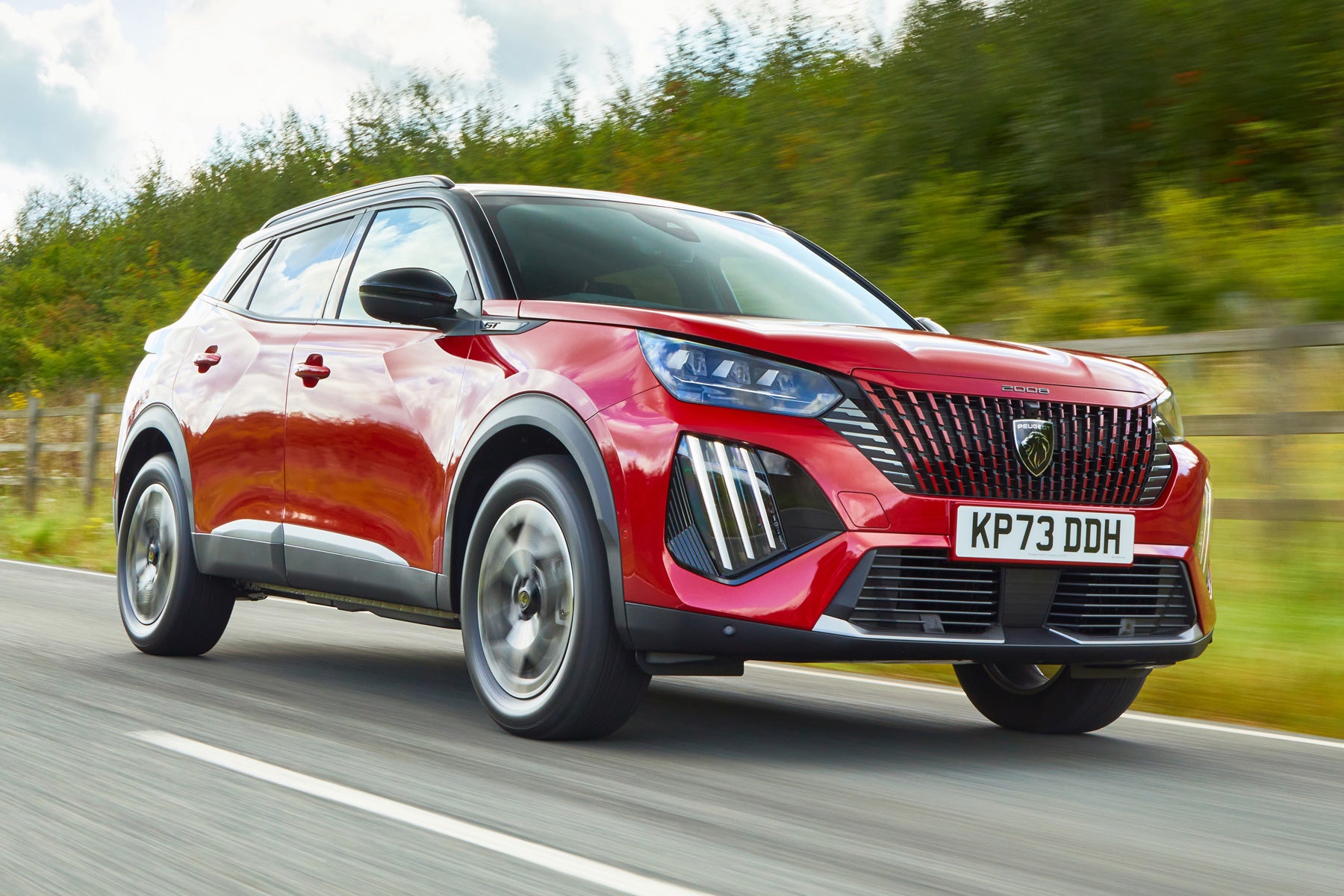Peugeot 2008 Review 2025: Price, specs & boot space
Written by Andrew Brady
Quick overview
Pros
- Peugeot’s pushed the boat out with the exterior styling
- It looks great on the inside, too
- It’s still a sensible family car that’s spacious and cheap to run
Cons
- The eye-catching design won’t be for everyone
- Basic models miss out on the fancy digital dashboard
- The long-throw manual gearbox feels imprecise
Verdict: Is the Peugeot 2008 a good car?
"The Peugeot 2008 will be right up your street if you find the SUVs from Skoda, SEAT and Volkswagen about as exciting as a weekend away at an accountancy convention. The Peugeot oozes brio, from its striking exterior to its high-tech interior."
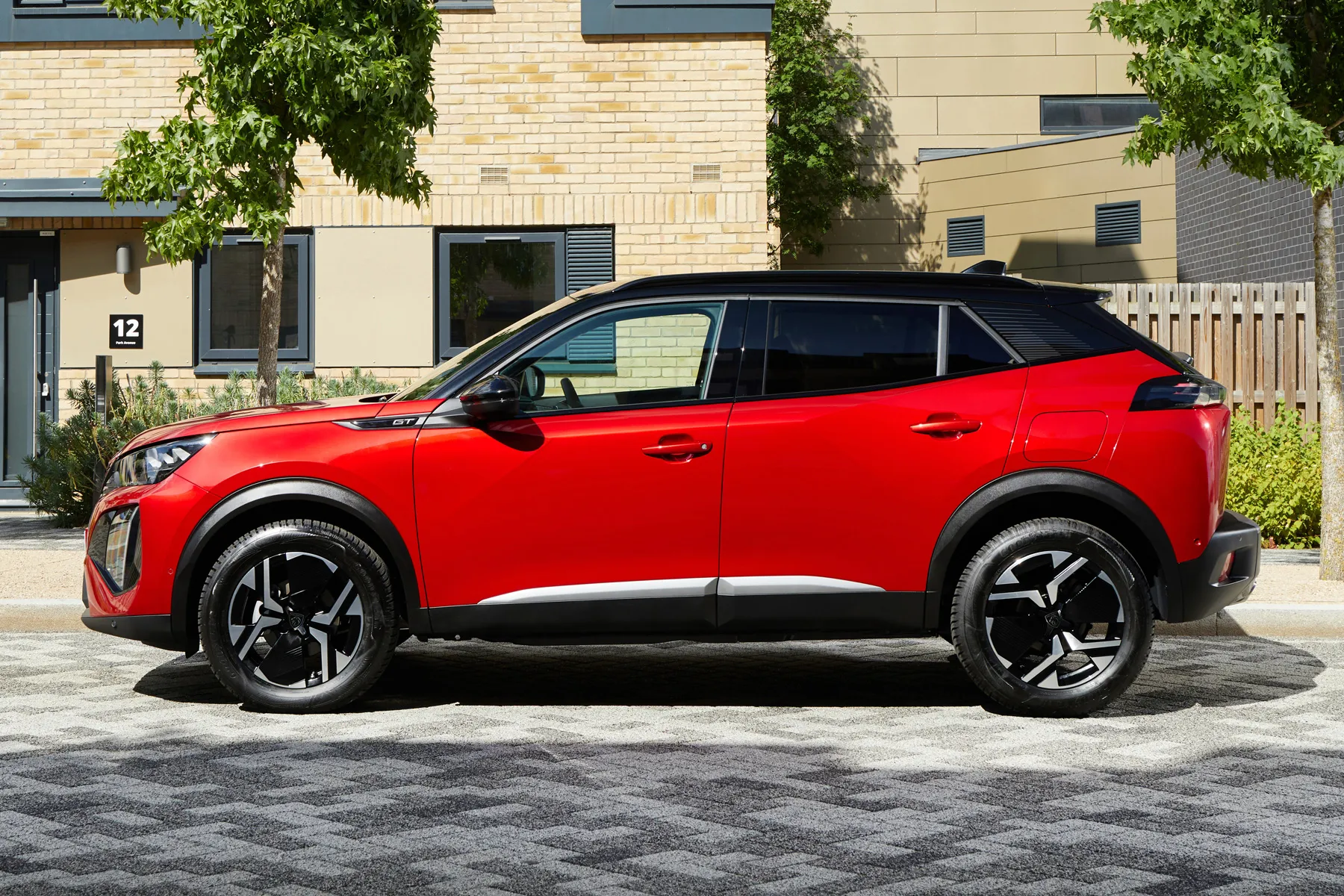
The Peugeot 2008 is a great small SUV that competes with the likes of the SEAT Arona, Skoda Kamiq, Renault Captur and Volkswagen T-Cross, while it also shares many of the same underpinnings as the Vauxhall Mokka. What the Peugeot can claim as a USP is its striking design that really does make the Peugeot 2008 stand out from the crowd. But it has plenty of other things going for it other than its looks. It's very practical, has great handling and a decent range of engines. Read on for our in-depth 2025 Peugeot 2008 review.
Let's start with those looks. The Peugeot 2008's combination of piercing LED headlights, huge grille and three-pronged daytime running lights give it the toothy grin of a lion: Peugeot’s badge mascot. Around the sides, there are plenty of creases and angles, while at the back you get tail lights that look like scratches caused by a big cat’s claws. It's nothing like any other small SUV. Even in its basic trim level it looks good, but the 2008 really looks the business when in the higher-up trims. In 2023, Peugeot facelifted the car. The general styling themes remained the same, but the new face introduced sharper edges for a slightly cleaner look.
And the striking design of the Peugeot 2008 continues on the inside with a sculpted dashboard that’s split into two layers. You get a central infotainment screen and digital instrument binnacle up top, and a strip of metal buttons below. Depending on what model you go for, you can also have dashboard stitching and carbon fibre-like trims.
The real talking point of the Peugeot 2008, however, is the digital instrument binnacle that’s brimming with cool animations and slick graphics that make the analogue dials in other small SUVs look archaic. That’s in addition to a 7.0-inch central infotainment screen that’s fitted with Apple CarPlay and Android Auto so you can mirror your phone’s functions on the car’s big screen. Higher-spec cars got a bigger 10.0-inch screen, and during the 2023 facelift, this bigger screen was made standard across the range.
What’s great about the Peugeot 2008 is that its cool design doesn’t come at the expense of practicality. This is one stylish car that'll fit into family life with no issues. There’s plenty of adjustment to get comfortable in your driver’s seat and the rear seats will accommodate two adults, although tall passengers might be short of knee room if the driver is also tall. The boot, meanwhile, is about average for the class. It’ll swallow a few suitcases and the adjustable floor means there’s no load lip to lift heavy items over.
It’s a well-rounded package that gets better when you hit the road. The Peugeot 2008’s light controls make it an easy car to drive slowly in town and the raised ride height gives you a clear view of the road ahead. It’s a quiet cruiser for a small car and it even handles corners well: it doesn’t lean too much and there’s plenty of grip.
The PureTech petrol engine offered with the Peugeot 2008 – with either 100, 130 or 155PS depending on whether you’re shopping for a new or used model – offers nippy performance and sounds sporty under acceleration. Want more economy? Then consider the 100PS diesel model, or the more recent Hybrid. Looking for a car that produces zero emissions, and is exempt from paying the London Congestion Charge? Then you’ll want the all-electric e-2008, which offers instant performance and almost-silent thrust.
In other words, the Peugeot 2008 has all the bases covered if you’re looking for a small SUV that’ll fit easily into your life. But perhaps what’s most impressive is that Peugeot's managed to package these talents in a car that’s also truly desirable.
Looking for a used car for sale? We've got 100s of Peugeot Approved Used Cars for Sale for you to choose from, including a wide range of Peugeot 2008s for sale. If you're looking for the older version, you need our used Peugeot 2008 (2013-2019) review.
Is the Peugeot 2008 right for you?
If you're looking for a relatively small but practical family car that'll cost buttons to run, but will also stand out in a car park full of Volkswagen, Skoda and SEAT SUV crossovers, the Peugeot 2008 is a great choice for you.
What other cars are similar to the Peugeot 2008?
The Peugeot 2008 has plenty of competitors including the Volkswagen T-Cross, Skoda Kamiq and SEAT Arona, all of which are well designed and spacious. The Renault Captur is another stylish option, while the Ford Puma looks great and is nice to drive, too. Also worth considering are the Nissan Juke and the Citroen C3 Aircross.
There are also several options which sit on the same underpinnings as the 2008, and all are worth a look if you’re tempted by the Peugeot. The DS3 (previously DS3 Crossback) and Vauxhall Mokka have been around for a while now, while the Jeep Avenger, Fiat 600 and Alfa Romeo Junior Hybrid are more recent. Most offer the same engine options as the Peugeot and slightly different driving characteristics: the Alfa especially, which feels the sportiest of the group.
Comfort and design: Peugeot 2008 interior
"One of the most impressive features of the 2008 is its cabin. Not only is it satisfyingly premium, with lots of well thought out features and soft-touch materials, it’s also much more interesting than the cabins in any of its competitors."
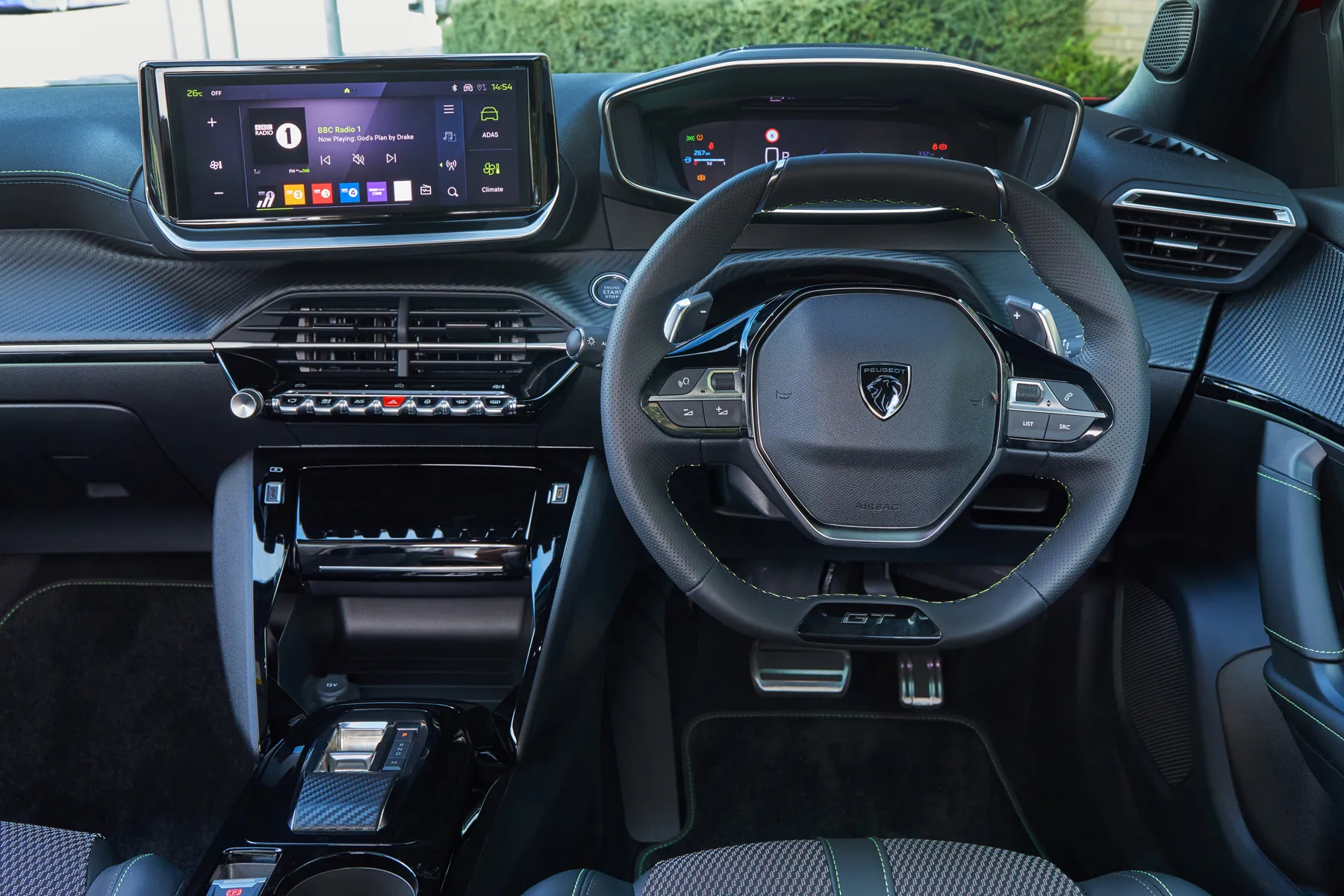
Higher spec Peugeot 2008 models get a clever 3D virtual instrument panel as part of Peugeot's iCockpit setup. This takes a little getting used to, projecting information in hologram from within the driver's eyeline, but Peugeot claims it cuts reaction times. While we're not entirely convinced of its practical benefits, it's certainly funky and modern to look at.
You get a higher seating position than you'll find in a Skoda Kamiq or Volkswagen T-Cross, but not everyone will get on with the iCockpit layout. The intention is that you'll position the seat to see the dials over the steering wheel rather than through it, but some drivers will find they don't 'fit' this seating position.
It's also a shame that no Peugeot 2008 features adjustable lumbar support as standard.
Quality and finish
It's easy to mistake the Peugeot 2008's cabin with one of a much more expensive SUV. Its two-layer dashboard is made of soft-touch plastics, and you get classy stitching and carbon-fibre-look trim. Sure, there are harder plastics lower down in the cabin, but it's nothing that feels out of place in a car at this price point. We expect it'll wear well, too.
Infotainment: Touchscreen, USB, nav and stereo in the Peugeot 2008
In early 2008s, you got a 7.0-inch touchscreen display as standard with most trims including the entry-level car, while the screen increased in size to a 10-inch item on GT Line models. The systems featured TomTom-based navigation on some models as well as Apple CarPlay and Android Auto, which mirror your phone’s display and allows you to use many of its features on the car’s big screen. The infotainment is easy enough to use, although responses can be a little slow compared to slicker systems used in Volkswagens, Skodas and SEATs. During the 2023 facelift, the bigger 10-inch screen was made standard across all trim levels, and the Apple CarPlay/Android Auto compatibility was made wireless.
Space and practicality: Peugeot 2008 boot space
The Peugeot 2008 is quite a practical choice. At 434 litres, the Peugeot 2008's boot space is a good size, and with little in the way of a lip, it makes loading bulky items easy. If you need more space, the rear seats drop to provide 1467 litres of room, pretty good for a SUV crossover of this size, and slightly better than the latest Nissan Juke and Skoda Kamiq.
With the rear seats left up, there’s a generous amount of room for rear passengers, plus ISOFIX points for two child seats. Access to the rear is good, too, thanks to wide-opening rear doors. Our only complaint is that taller passengers will want more knee room if someone tall is sitting in front of them.
Up front, there's loads of room in the Peugeot 2008. Two adults will get comfortable very easily, without any awkward elbow bashing on bumpy roads. There's plenty of storage space for your odds and ends, including fairly big door pockets, generous cup holders and a deep cubby box in the middle of the cabin.
In terms of exterior dimensions, the Peugeot 2008 measures 4300mm long, 1987mm wide and 1530mm in height. That makes it a touch longer than the likes of the Skoda Kamiq, but the width is about the same.
Handling and ride quality: What is the Peugeot 2008 like to drive?
"The Peugeot 2008 is easy to drive in town and comfortable on the motorway, and you probably won't mind that it isn't particularly fun to hustle along a country road."
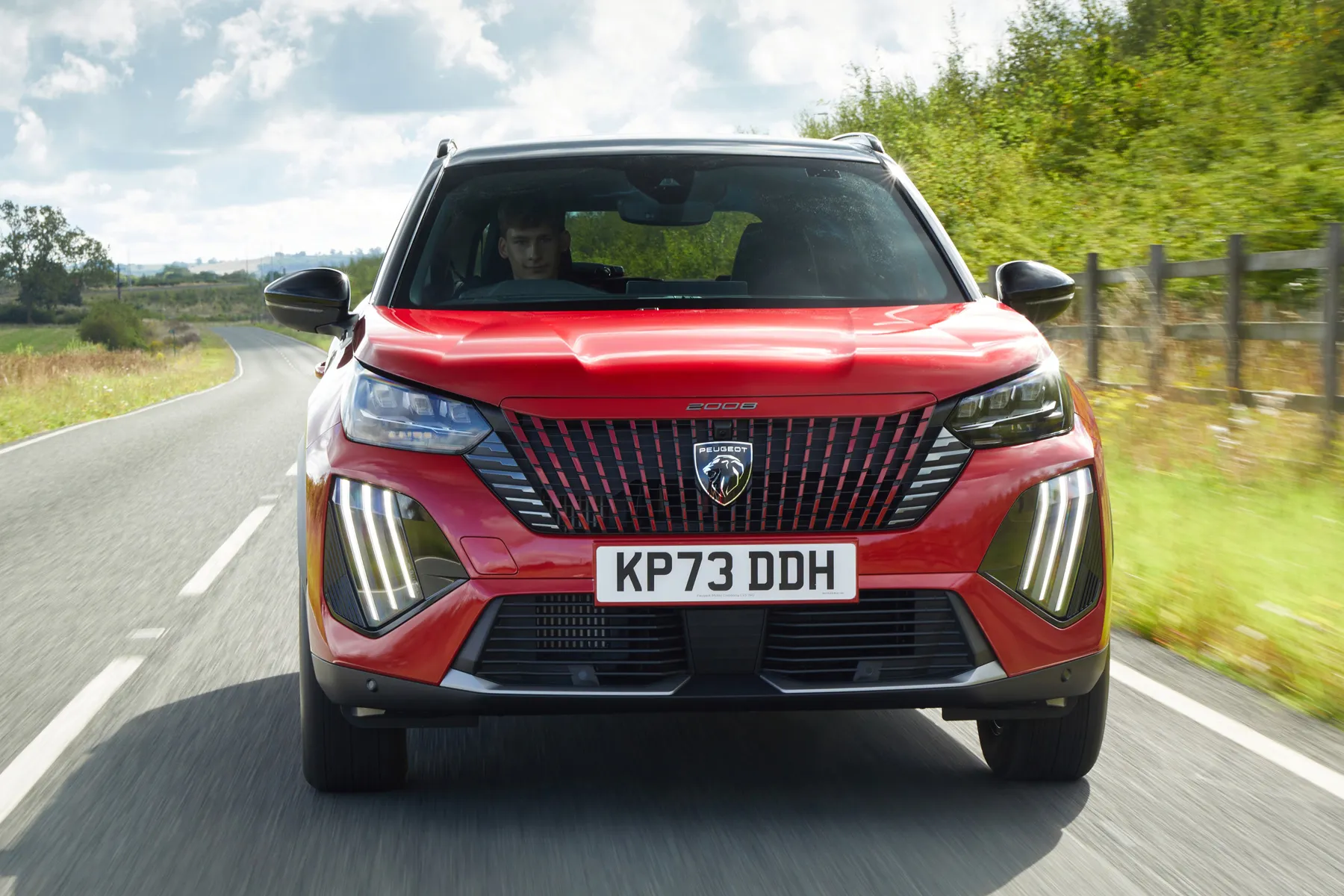
Around town, light steering and excellent visibility make the Peugeot 2008 an easy car to manoeuvre into tight spaces. All models get some kind of parking assistance, from rear parking sensors on the most affordable trim levels to a reversing camera on higher-spec cars. There's an optional semi-automatic park assist feature, which will control the steering when you're reversing into a space: ideal if the idea of a multi-storey car park fills you with dread.
The small steering wheel means the Peugeot 2008 feels surprisingly agile on the open road, too, although – like with other Peugeot models – it can make the car feel slightly too darty on the motorway. It's not as fun to drive as a Ford Puma, but it feels safe enough, and it doesn't lean too much in corners. While the ride quality isn't quite as compliant as a Skoda Kamiq, it generally copes well with bumpy roads. Avoid the high-spec models with large 18-inch alloy wheels if you're concerned about ride comfort.
What engines and gearboxes are available in the Peugeot 2008?
The 2008 shares a platform with the 208 and over the years it’s been available with the same 100PS, 130PS and 155PS PureTech petrol engines, as well as a 1.5 diesel with 100PS or 110PS. There's also a hybrid, and an all-electric version in the form of the e-2008.
The mid-range PureTech 130 is the most popular. Like all the petrol engines in the range, it’s a 1.2-litre three-cylinder unit, and it’s very good: quieter than most small-capacity turbocharged engines and punchy enough for the majority of drivers. It almost makes the more powerful PureTech 155 seem redundant (and you could only buy that in top-spec trim, anyway). That's probably why it's no longer offered, and neither are the diesels.
The 2008 Hybrid uses another variant of the 1.2-litre Puretech engine but with electric assistance, for 136PS and 230Nm of torque. While not much more powerful than the 130PS Puretech engines, its 8.3-second 0-62mph time is a worthwhile improvement over the 9.2-second time of the automatic-equipped Puretech 130. Naturally, it’s auto-only, with a six-speed gearbox.
Buyers can choose from a six-speed manual or eight-speed automatic gearbox in the Puretech versions. The manual isn’t the slickest gearbox on the market: a long throw means it feels quite stodgy to use. As such, we’d recommend the EAT8 automatic gearbox. This is a torque-converter gearbox that responds quickly and adds to the premium feel of the Peugeot 2008.
Refinement and noise levels
The Peugeot 2008's refinement levels are just as impressive as in a much bigger or more expensive SUV. You won't notice a great deal of engine noise in the cabin, even less in the all-electric e-2008, while road noise is well-hushed (even with the bigger 18-inch alloy wheels and rubber band tyres).
Like most crossover SUVs, you will notice a bit more wind noise in the 2008 than in the equivalent hatchback. It's not too annoying, though: it soon turns into background noise that can easily be drowned out by the radio.
Safety equipment: How safe is the Peugeot 2008?
The Peugeot 2008 scored four stars out of five when it was crash-tested by Euro NCAP in 2019, although it’s worth noting that the Nissan Juke scored five stars in the same test thanks to its superior pedestrian protection.
The Peugeot’s safety can be boosted by finding an example fitted with the optional Drive Assist Pack, which means the 2008 can accelerate, brake and steer itself on the motorway.
MPG and fuel costs: What does a Peugeot 2008 cost to run?
"A crossover SUV like the Peugeot 2008 will always be slightly thirstier than the equivalent hatchback, but you won't need to visit the petrol station too frequently."
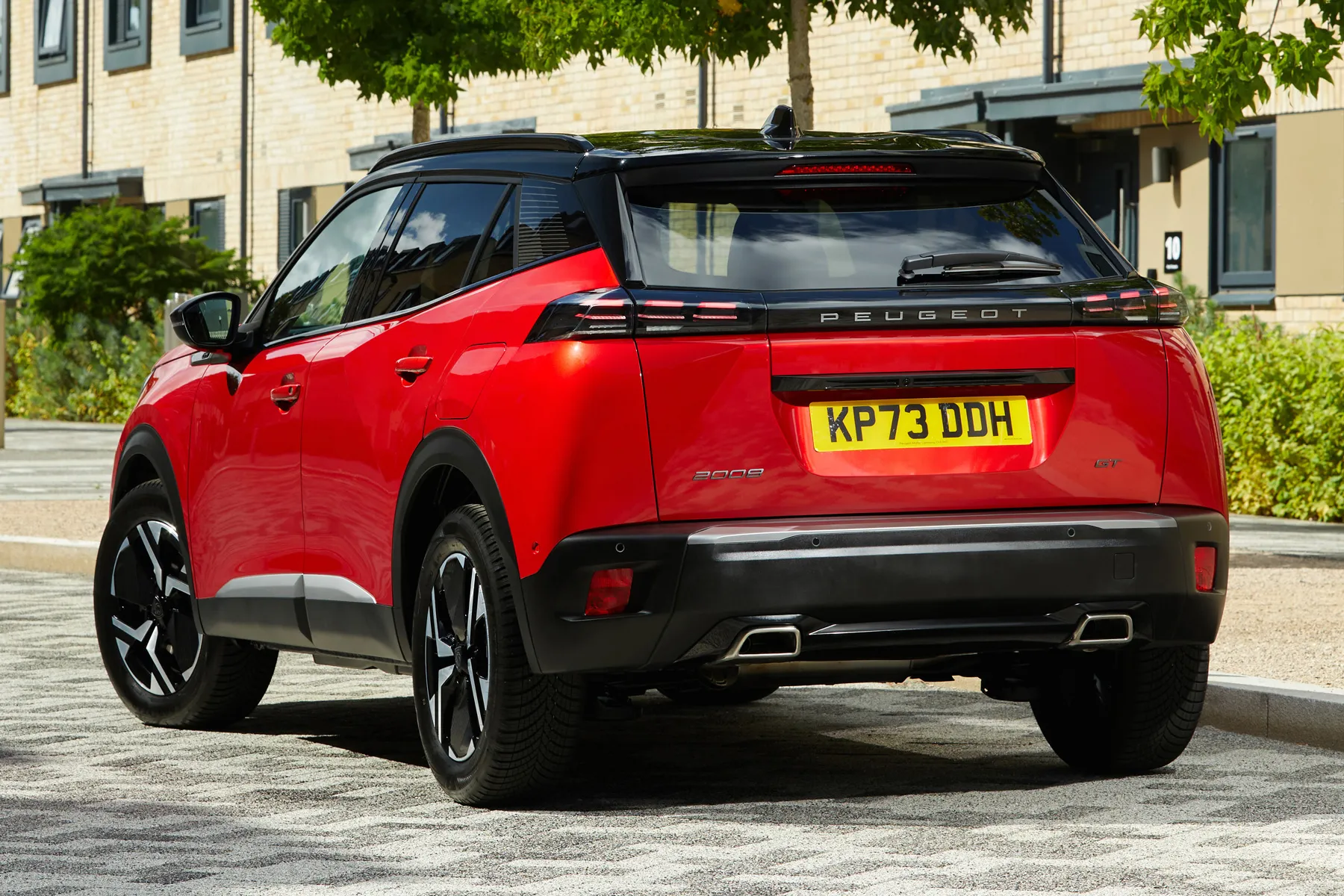
The diesel Peugeot 2008 is the most frugal, capable of up to 65.7mpg in combined WLTP fuel economy tests (they're the official source of all MPG figures). It’s no longer available brand new, though, so if you’re shopping for a new or nearly-new car, then your options are a selection of petrols, hybrids, and fully electric vehicles.
If you don't cover a huge amount of miles, you'd be better off with one of the petrol models of the Peugeot 2008. With the six-speed manual gearbox, the PureTech 100 returns up to 52.3mpg and the PureTech 130 up to 52.3mpg, while this drops to 48.9mpg if you spec the latter with the auto transmission. The old PureTech 155, another dropped from the range, is officially good for up to 46.6mpg. The 136PS hybrid has combined economy of up to 62.1mpg.
As is always the case, whether you'll actually see these figures in the real world will depend on a variety of factors, from your driving style, to the weather conditions, to the roads you're driving on.
Obviously, the E-2008 will cost even less to run, purely because filling up with electricity is usually cheaper than paying for petrol or diesel. We say 'usually', because some public rapid chargers are just as expensive as using fossil fuel, so for the lowest costs, do most of your charging at home, and on cheaper overnight tariffs.
Peugeot 2008 reliability and warranty
It's fair to say that Peugeot does not have the best reputation for reliability and the brand is working hard to rectify this. Peugeot is a repeat offender when it comes to sitting towards the bottom of the Honest John Satisfaction Index, and the most recent survey in 2025 did little to change that. Peugeot was the fifth most unreliable brand (with the 2008 singled out as one of the more problematic models), while the larger 3008 and the Peugeot 308 were both in the ten least reliable cars.
Our advice if you’re thinking of a new 2008 is to read up on the warranty terms and conditions, and if you’re buying a used model, prioritise one with a comprehensive service record, to avoid any car that a previous owner might have neglected.
Peugeot 2008 insurance groups and costs
The Peugeot 2008 ranges from Group 13 insurance for a basic 2008 Active model with the entry-level 100PS petrol engine, to Group 23 for a 155PS petrol model in sporty GT trim. Of the models still on sale as of 2025, you’re looking at group 16 for all Puretech versions regardless of trim level, group 23 for the hybrid, and groups 25-27 for the E-2008.
We were quoted £273 to insure a Peugeot 2008 1.2 PureTech GT Line. That's for a 40-year-old teacher based in Lincolnshire. Insurance prices are very dependent on your personal circumstances but, compared to rivals, the Peugeot 2008 shouldn't be particularly expensive to insure.
VED car tax: What is the annual road tax on a Peugeot 2008?
First-year tax on the 2008 varies from £440 (for the 111g/km hybrid) to £540 (for the 130PS Puretech with an automatic gearbox), while the E-2008 is a flat £10 in year one. From then on, all models will cost you £195 per year. Just be sure not to spec an E-2008 over £40,000, as this attracts a hefty tax surcharge.
For older 2008s, annual VED will also be £195 per year, which now also includes the electric versions; the days of free VED for EVs have now passed, though the E-2008 still makes sense as a company car, thanks to low 3% Benefit-in-Kind tax.
Peugeot 2008 price
"Prices for a brand new Peugeot 2008 range from around £28,000 for a 100PS petrol in Allure trim to just over £37,000 for an electric model in top-of-the-range GT specification."
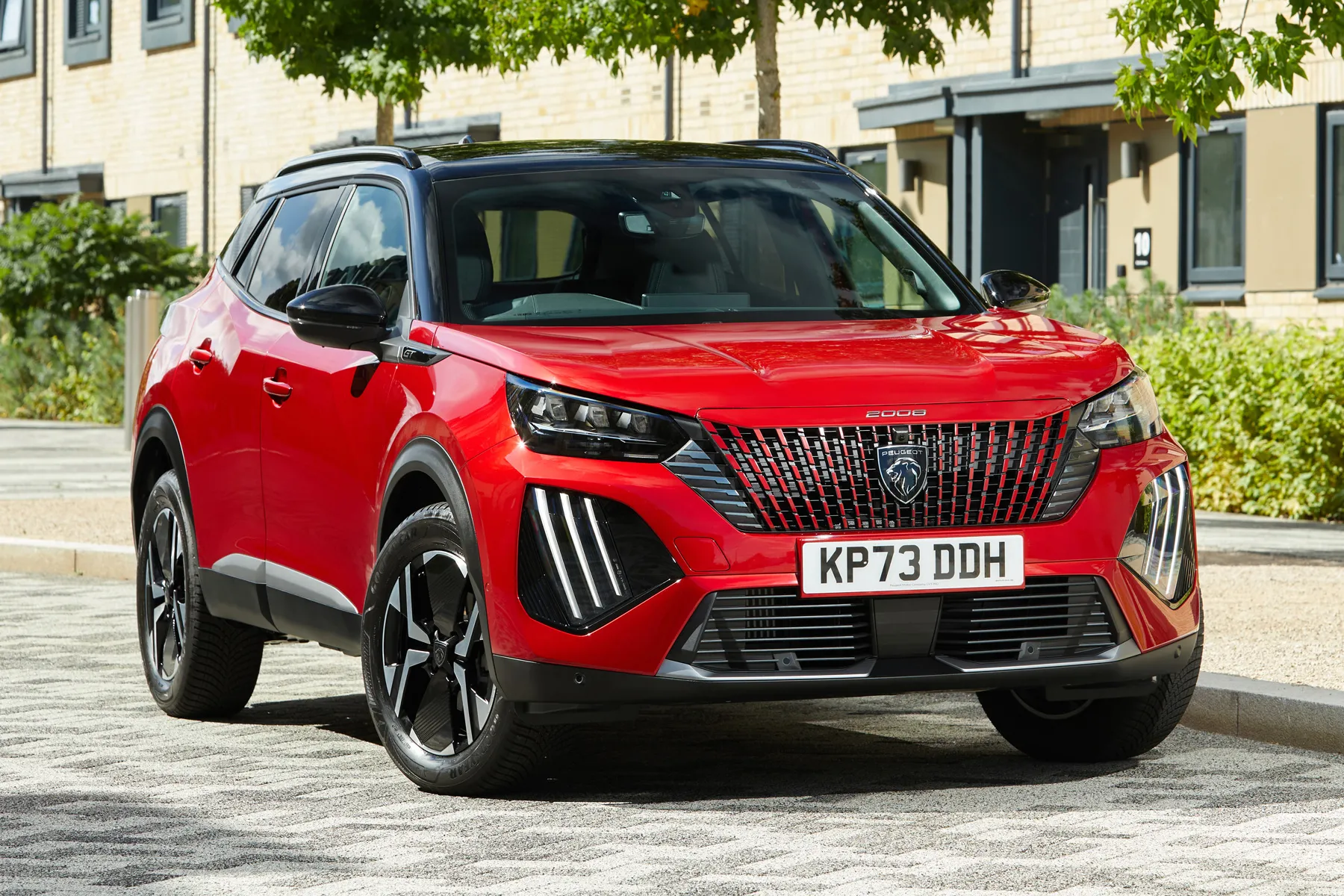
The top and bottom of the 2008 range have moved around a bit recently. With Active trim no longer offered, the base price has jumped up by around £4,000, with a 2008 Allure with the 1.2-litre Puretech engine and manual gearbox now a £28,000 car, so not cheap. At the same time, Peugeot has managed to make the electric versions more cost-effective; previously the top model cost more than £40,000, but as of spring 2025, you’ll pay just over £37,000.
The earliest second-generation 2008s arrived in 2020 and you can now get into one for as little as £10,000, although bear in mind these cars will be well out of warranty by now. On the plus side, if you prefer diesel power to more recent petrols, hybrids and EVs, then diesel was still offered at that point.
For cars with a more recent level of specification and lower miles, 2023 cars with under 20,000 miles start at around £15,000. 2023 was also when the car was facelifted, so you may find slightly fresher-looking cars at this same price point.
E-2008 electric models aren’t a great deal more expensive, either. 2021 cars with 50kWh battery packs and 20k-30k miles start below £15,000 and you can find nearly-new cars for little more than £20,000.
Trim levels and standard equipment
Peugeot has messed about with the Peugeot 2008's trim levels on a fairly regular basis throughout the time it's been on sale. They've usually been centred around the words Active, Allure and GT as the central equipment grades, but there have been other minor variations in the kit levels on top of those basic grades, which have been signified with either the word 'Premium', or a plus sign, or some other key indicator. Aside from those few minor fluctuations, though, kit levels have stayed broadly consistent.
Active and its many variations (including Active Premium) have recently been dropped from the range but it’s a common sight on forecourts, where you’ll find 16-inch alloy wheels, automatic lights and wipers, a 7.0-inch infotainment screen with Apple CarPlay and Android Auto, built-in sat-nav, automatic emergency brakes and rear parking sensors.
At the time of writing, Allure is now the starting point of the range and comes with every powertrain and gearbox option offered on the 2008. It gets gloss-black exterior highlights and 17-inch alloy wheels, along with Peugeot’s cool-looking digital dashboard, a 10-inch infotainment screen, front parking sensors and passenger seat height adjustment. Allure Premium is no longer offered, but on these you’ll also find a 10.0-inch touchscreen, that used to be an upgrade on the older model’s 7.0-inch screen.
The Peugeot 2008 GT adds to Allure specification and looks more striking on the outside thanks to a contrasting black roof and full LED headlights. Extra kit includes a reversing camera, keyless entry, a floating 3D virtual cockpit display, sports-style ‘Dynamic’ seats, eight-colour ambient lighting, and a perforated leather steering wheel with green stitching.
Peugeot 2008 GT Premium is another trim level no longer offered, and was based on GT Line trim, but these cars stand out thanks to their larger 18-inch alloy wheels. They also get active cruise control and lane positioning assist so the car can accelerate, brake and steer itself on the motorway. Blind-spot monitoring is another system fitted as standard that’ll warn you if you try to pull out in front of another car hidden in your blind spot. Peugeot 2008 GT models feel posher thanks to their Alcantara interior and glass roof, which floods the cabin with light.
Ask the heycar experts: common questions
Is the Peugeot 2008 reliable?
Is the Peugeot 2008 better than a Renault Captur?
Is a Peugeot 2008 an SUV?
Peugeot 2008 Alternatives
Get our latest advice, news and offers
Keep me updated by email with the latest advice, news and offers from heycar.
By submitting you agree to our privacy policy
